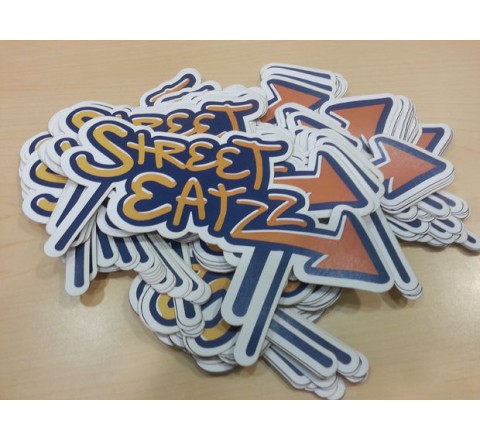Sticker printing is more than just a fun way to decorate your belongings or promote your brand. It’s an art form that combines creativity, precision, and technology. Whether you’re a small business owner looking to create promotional materials, an artist aiming to sell custom stickers, or just someone who loves the personal touch stickers can add, mastering the process can significantly impact the quality of your results. This blog post will share insider tips and hacks to help you achieve flawless sticker printing every time.
Understanding the Basics of Sticker Printing
Before diving into the hacks, it’s essential to understand the fundamentals of sticker printing:
- Materials: Stickers can be printed on a variety of materials, including paper, vinyl, and polyester. Each material has its properties, benefits, and ideal use cases.
- Printing Techniques: The main printing techniques include digital printing, offset printing, and screen printing. Digital printing is ideal for small runs and intricate designs, while offset and screen printing are suitable for larger quantities and simpler designs.
- Finishes: Stickers can have various finishes, such as matte, gloss, or UV coating, each offering a different look and level of durability.
Designing for Success
The design phase is crucial in ensuring your stickers turn out beautifully. Here are some design tips:
- High-Resolution Images: Always use high-resolution images (300 dpi or higher) to ensure your stickers are sharp and clear.
- Color Mode: Design in CMYK color mode, which is used for printing, rather than RGB, which is used for screens. This ensures that the colors you see on your screen will closely match the printed stickers.
- Bleed and Safe Zone: Include a bleed area (typically 1/8 inch) around your design to account for any cutting discrepancies. Ensure all important elements are within the safe zone, away from the edges.
- Vector Graphics: Whenever possible, use vector graphics (like those created in Adobe Illustrator) instead of raster images. Vector graphics can be scaled infinitely without losing quality.
Choosing the Right Material
Selecting the appropriate material for your stickers is critical:
- Paper Stickers: Ideal for indoor use, such as on envelopes, notebooks, or packaging. They are cost-effective but not waterproof.
- Vinyl Stickers: Durable and waterproof, making them perfect for outdoor use. They adhere well to various surfaces and withstand the elements.
- Clear Stickers: Made from clear vinyl, these stickers are great for windows or any surface where you want the background to show through.
- Eco-Friendly Options: If sustainability is a priority, consider using biodegradable or recycled materials.
Printing Techniques and Hacks
Each printing technique has its nuances. Here are some insider tips:
- Digital Printing:
- Variable Data Printing: Take advantage of digital printing’s capability for variable data printing to create personalized stickers.
- Cost-Effective for Small Runs: Ideal for short runs, as setup costs are lower compared to other methods.
- Offset Printing:
- Economical for Large Quantities: Offset printing becomes cost-effective with larger quantities due to the lower per-unit cost.
- Consistent Quality: Provides high-quality and consistent prints, especially for simple designs with solid colors.
- Screen Printing:
- Best for Bold Designs: Perfect for designs with bold colors and simple graphics.
- Durability: Produces long-lasting stickers that can withstand outdoor conditions.
Finishing Touches
The finish you choose can enhance the look and durability of your stickers:
- Gloss Finish: Adds a shiny and vibrant look, making colors pop. Ideal for eye-catching promotional stickers.
- Matte Finish: Offers a smooth and elegant look, reducing glare and enhancing readability.
- UV Coating: Provides extra protection against scratches, fading, and water damage. Best for outdoor stickers.
Quality Control and Testing
Before mass-producing your stickers, conduct thorough quality checks:
- Print Proofs: Always request print proofs to check for color accuracy, alignment, and overall appearance before the final run.
- Durability Tests: If your stickers are intended for outdoor use, test them for weather resistance, adhesive strength, and UV protection.
- Feedback: Get feedback from a small focus group to ensure the design and quality meet the desired standards.
Cost-Effective Strategies
Producing high-quality stickers doesn’t have to break the bank. Here are some cost-saving tips:
- Bulk Printing: Printing in larger quantities often reduces the per-unit cost. Plan ahead and order in bulk when possible.
- Choose Standard Shapes and Sizes: Custom shapes and sizes can increase costs. Opt for standard options to save money.
- Simplify Designs: Complex designs with many colors and intricate details can be more expensive to print. Simplify your design to cut costs without sacrificing impact.
Common Mistakes to Avoid
Even with the best intentions, mistakes can happen. Here are some common pitfalls to watch out for:
- Ignoring Bleed and Safe Zones: Failing to include bleed and safe zones can result in critical design elements being cut off.
- Poor Color Management: Not converting your design to CMYK can lead to color discrepancies in the final product.
- Overcrowded Designs: Overloading your sticker with too much information or design elements can make it look cluttered and unreadable.
Conclusion
Sticker printing is a blend of art and science, requiring attention to detail, creativity, and technical know-how. By following these insider tips and hacks, you can achieve flawless results that not only meet but exceed your expectations. Whether you’re printing stickers for business promotion, personal projects, or artistic endeavors, mastering the process will allow you to produce high-quality, eye-catching stickers that leave a lasting impression.

